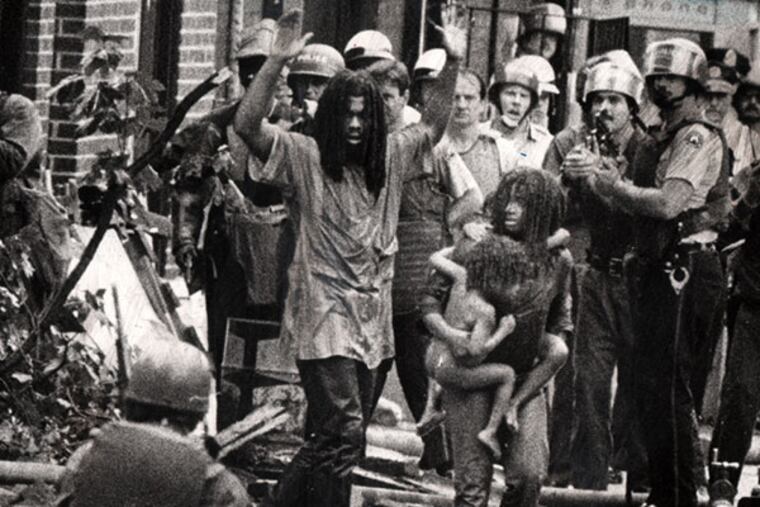'Let the Fire Burn': Examining how MOVE tragedy happened
How could this have happened? In Let the Fire Burn, one of the most horrific days in Philadelphia history - May 13, 1985, when the city dropped explosives on a rowhouse occupied by members of MOVE, killing 11 people (five of them children) and destroying 61 homes - is revisited, reexamined, and reflected upon.

How could this have happened?
In Let the Fire Burn, one of the most horrific days in Philadelphia history - May 13, 1985, when the city dropped explosives on a rowhouse occupied by members of MOVE, killing 11 people (five of them children) and destroying 61 homes - is revisited, reexamined, and reflected upon.
Eschewing traditional documentary tools - no narration, talking-head interviews, B-roll, or reenactments - Jason Osder's film instead relies exclusively on found footage. There is archival video from the MOVE Commission, appointed by Mayor W. Wilson Goode to investigate the catastrophe that happened on his watch. There are TV newscasts. There is a haunting deposition interview with 13-year-old Birdie Africa (Michael Moses Ward, who died in an accidental drowning on a cruise ship in September), the sole child inside the MOVE compound to survive. (Ramona Africa, still active with the group, is the only adult to have escaped from the burning house.)
There is video shot by the police. There were student films about MOVE, public-affairs broadcasts, and other archival material. Piecing the components together, and only sparingly deploying intertitle cards for clarity, Let the Fire Burn brings this 28-year-old tragedy front and center again - vividly, viscerally.
This vérité narrative approach mostly works, though context and continuity suffer in spots. But what Osder, a film professor at George Washington University, succeeds in doing is injecting a sense of urgency and immediacy back into the equation. The animosity between police and members of MOVE - an Afrocentric group with a back-to-nature mission - is palpable, and the momentous miscalculations and miscommunications on the part of Goode, Police Chief Gregore J. Sambor, and Fire Department Commissioner William Richmond are doubly shocking when viewed again.
The MOVE members who lived on Osage Avenue in 1985 were hardly good neighbors. Their makeshift fortifications were an eyesore, they set up speaker systems, and harassed area residents night and day. The group's long history with the city and its Police Department was marred by violence and vitriol. A 1978 shootout in Powelton Village resulted in the death of Police Officer James. J. Ramp.
Let the Fire Burn does not glorify MOVE. What it does do is force us to consider why and how this surreal event - a city bombing its own citizens, leaving innocent children dead - occurred.
And ask, could something like it ever happen again?
Let the Fire Burn *** (Out of four stars)
Directed by Jason Osder. With
W. Wilson Goode, Michael Moses Ward, Ramona Africa, and others. Distributed by Zeitgeist Films.
Running time: 1 hour, 28 mins.
Parent's guide: No MPAA rating (violence, profanity, adult themes)
Playing at: Ritz BourseEndText
215-854-5629
@Steven_Rea